Definition
The central dogma was proposed by Francis Crick in the late 1950s. This trailblazing theory suggested that genetic information flows primarily from nucleic acids in the form of DNA and RNA to functional proteins during the process of gene expression. What makes the central dogma so innovatory is its level of correctness at a time when genome research was only just beginning. The central dogma of genetics does not describe the mechanics of protein synthesis but tells us that gene expression follows a near-predictable pattern.
What is the Central Dogma of Biology?
When looking at what the central dogma is, we must first understand the word ‘dogma’ and know why this is not the best use of it. Crick later admitted that a better term would have been ‘basic assumption’.
A dogma is a set of principles that someone with authority understands as true. This means that the central dogma of gene expression should always be true. Francis Crick, as one of the top authorities of molecular science in the 1950s and 60s, did not mean that these steps from DNA to RNA to protein could not be reversed. Instead, he meant this was the predominant direction in which gene expression flowed.

In more than one sense, Crick’s idea is a dogma – without deoxyribonucleic and ribonucleic acids, protein synthesis cannot occur in living cells. Furthermore, once a piece of genetic code has entered a protein, that protein is unable to change the original code sequence of the DNA. In other words, we have as yet been unable to prove that a naturally synthesized protein can rewrite DNA – the flow of genome information from DNA to RNA to protein within the confines of a cell is a dogma.
Protein synthesis basics will not be discussed in this article. The reader should know the protein synthesis steps of transcription and translation of nucleic acids, messenger and transfer RNA, ribosomes, amino acids, peptides, and proteins.
Crick’s Dogma – A Trailblazer
At the time of Crick’s ideas, transfer RNA (tRNA) was still undiscovered. Crick theorized that a small molecule must be present to transport amino acids to the ribosome – at his time these organelles were called microsomes and no one was sure of their role. Even current basic knowledge such as the requirement of nucleic acids for protein synthesis was widely unknown in the 1950s. Messenger RNA (mRNA) was only discovered in 1960; its research was published the following year. While many papers argue about the central dogma of biology to this day, Crick’s theory at the time was groundbreaking. It was he who predicted that, in the future, we would be able to follow evolution through gene sequences – a field of research that is currently changing the way we classify living organisms.
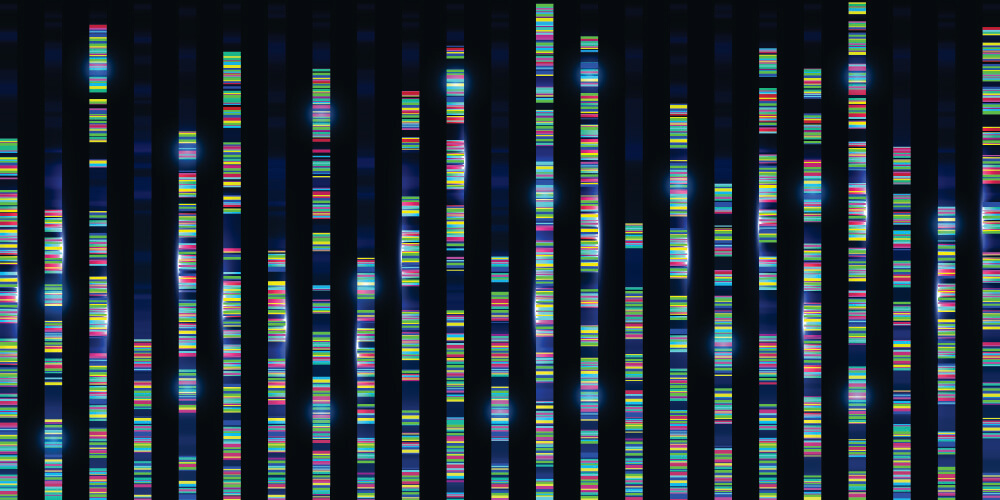
Crick also argued that the most important function of our DNA was to control protein synthesis. At a time where scientists knew very little of the role of genes, this was the best description of the relationship between DNA, RNA, and protein when no one truly knew what genetic information was formed from or how it was used.
We should, therefore, firstly place this theory in the right historical environment. It may not be dogma, but its strong message brought genetic research well into the future.
Central Dogma Definition
Another much-argued point about Crick’s dogma is its core statements. Many students are simply told that this theory is about the strict steps of transcription, translation, and protein synthesis.
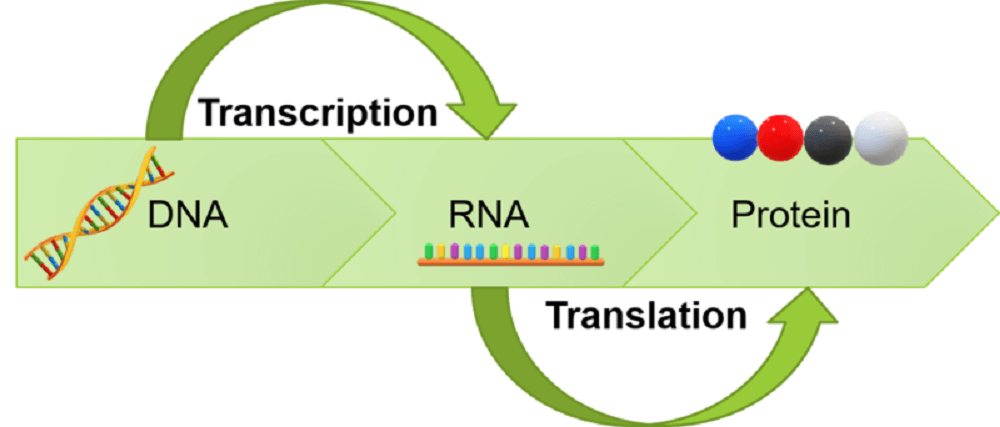
However, the central dogma of molecular biology states that coded genetic information within DNA is transcribed into mRNA, where each mRNA molecule contains the information necessary to produce proteins. It states that this sequenced flow can be reversed at certain points but not from protein to nucleic acid. The one-way flow of transcription to translation to protein synthesis is not the central dogma.
The only dogma of Crick’s theory (or basic assumption) is how it has not yet been seen that genome sequences are changed by an intracellular synthesized protein. In his eyes, reverse transcription between DNA and RNA has been shown to exist; reverse translation between protein and RNA has not been shown to exist. Reverse translation would mean that the amino acids in a polypeptide or protein can recognize tRNA anticodons and join them together to form a new molecule of RNA. This can be done synthetically in a lab but is not a natural intracellular process.
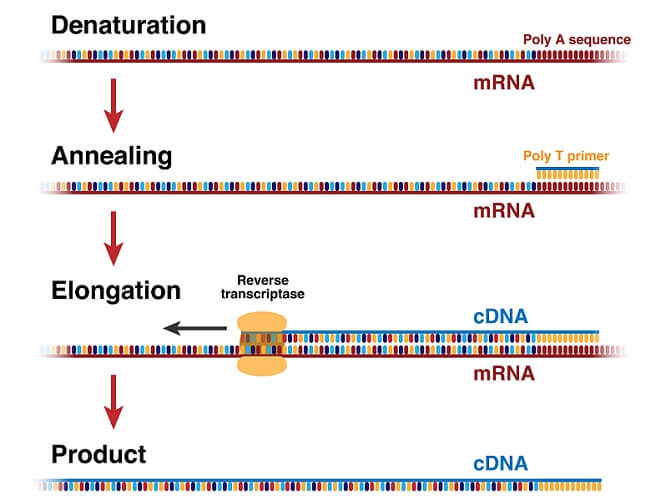
Crick’s dogma does not say that reverse translation is impossible but that this must occur by very different molecular mechanisms. In terms of prions (discussed further on), reverse translation from protein to genome exists; however, this process requires specific enzymes that do not exist within the normal cell environment to recognize and connect tRNA anticodons.
Finally, the central dogma is not a single-sentenced statement but an entire theory. When you look at the central dogma of biology definition from a non-scientific source, you will probably read about the flow of protein synthesis from DNA to protein via RNA. The central dogma diagram below is a typical, hazy representation. This is sometimes referred to as the central dogma order. Crick’s discovery is much more than a single statement and was never meant to be absolute – he knew very well that genetic research still had a long way to go.
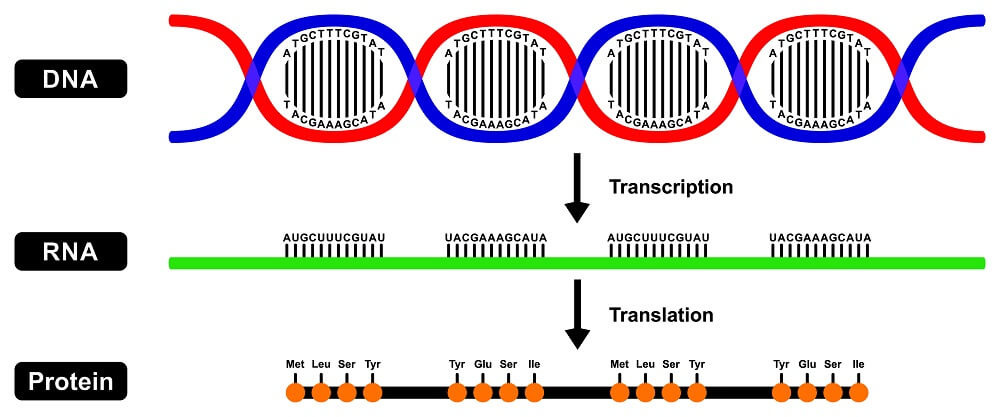
Central Dogma Exceptions
Reverse transcription is sometimes included as a central dogma exception. As we have seen, Crick did not deny the existence of flow reversal between DNA and RNA. This also means that retroviruses do not provide evidence of an exception to the rule. Retroviruses transcribe RNA into DNA using the enzyme reverse transcriptase. The only way in which we can add retroviruses as an exception to the ‘rule’ is in the form of extremely primitive retroviruses that have no DNA. Here, information flow can only occur between RNA and protein.
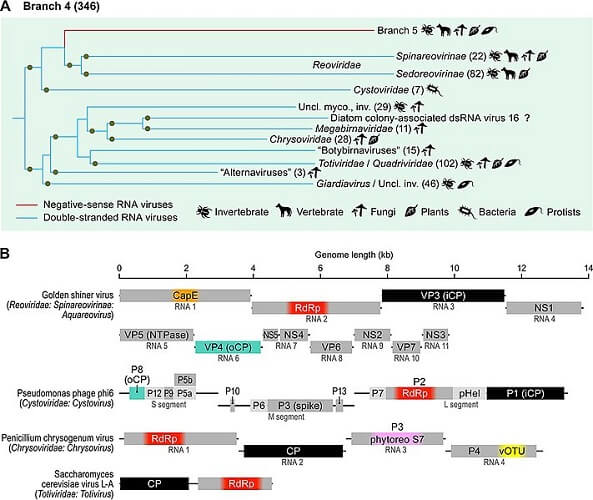
The other often-quoted exception to Crick’s central dogma is the prion – with prions, abnormal proteins ‘replicate’ by changing the forms of surrounding proteins. They infect and change, rather than reproduce. Proteinaceous infectious particles, only recently discovered, are unique. Although cases of ‘scrapie’, a disease that caused sheep to scrape against fences and trees, were recorded in 1732, very little historical evidence can pinpoint the evolution of the prion. As a natural protein that has, at some stage, misfolded, the prion does not contain genetic material in the form of nucleic acids – the basic molecules of the central dogma. Once in the tissues of a living organism, they do not multiply but affect similar proteins – often in the brain – by behaving as templates. Other proteins change to mimic the abnormal prion form and go on to convert other naturally occurring proteins into this shape. The original prion can be caused by a genetic mutation of the normal PrP protein, through transmission from infected sources such as meat and fungi, or as a spontaneous misfolding event. The latter cause is most likely the case in Creutzfeld-Jacob disease in cattle.
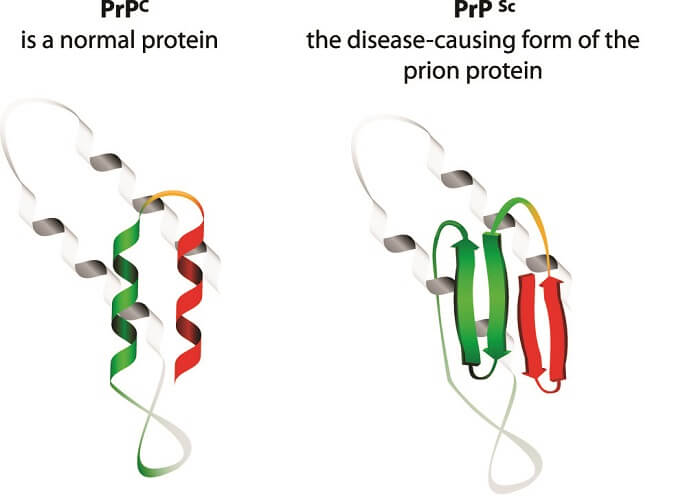
However, if you – as Francis Crick made clear – associate the central dogma only with cellular life, it remains true. To date, it has no exceptions. This is because prions and retroviruses are not cells. Viruses and prions are proteins. They need living organisms to multiply and do not grow or make their own energy; they are not ‘alive’. On a genetic level, retroviruses are alive because they contain genetic material, evolve, and reproduce (albeit within a living organism). Prions contain no genetic material and are simply wrongly-folded proteins.
Central Dogma and Genetic Medicine
Crick’s central dogma applies to all biological cells (not retroviruses or prions) containing DNA. Up to the present, no genetic medicine disproves the central dogma. Quite the contrary – most research follows the assumptions made by Crick nearly seventy years ago.

Genetic medicine can be applied at different points within the steps of protein synthesis.
- Replication: a portion of DNA splits open to make a copy of the original.
- Transcription: transfer of a section of replicated DNA (template DNA) to mRNA.
- Splicing: one or more unnecessary sequences (introns) are removed from immature mRNA. Alternatively, different introns can be removed to make different mature mRNA molecules.
- Translation: the ribosome reads groups of three sequences (codons) on the mRNA at binding sites. Initiation and elongation factors bring the correctly-matching anti-codon of a tRNA molecule to each codon. Each tRNA brings with it a specific amino acid. Amino acids are linked to form a polypeptide chain. As the chain moves through the ribosome, the polypeptide chain can begin to fold to produce a functional protein if the code translates into a folding protein. Other ‘chaperone proteins’ are usually required to help in the folding process; splicing at this stage is also possible. Spliced-out portions of a polypeptide or protein are called inteins.
To treat genetic diseases, we can intervene at any of the above steps:
- Gene therapy: introducing functioning copies of genes to replace non-functioning or disease-causing genes via viral vectors (carriers). Unhealthy cells are ‘infected’ with health-promoting genetic information. When the receiving cells divide, daughter cells contain the engineered sequence.
- Gene switching: switches gene transcription on or off. Many genes are only activated at certain periods or in certain cells by regulatory proteins that bind to non-coding areas of the DNA on that gene. Repressor or activator proteins bind to these proteins and so repress or activate the expression of that gene.
- RNA splicing: certain proteins are sometimes not produced due to mutations that block translation. This is called exon skipping. For example, cataplexy is the result of exon skipping mutations in the gene that produces a brain-based receptor. RNA splicing might alleviate symptoms caused by exon skipping mutations. Genetic engineers insert a short piece of RNA (antisense RNA) that skips over the disease-causing mutation. While current (early) research produces short and, therefore, partially functional proteins, hope is on the horizon for many genetic diseases.
- RNA interference: when unwanted proteins are produced, often through overexpression or wrongly-timed expression, it is possible to rectify this through the insertion of small interfering RNA (siRNA) or microRNA (miRNA). These bind with a silencing complex and together break up corresponding molecules of mRNA. This genetic medicine therapy has the potential to silence any gene.
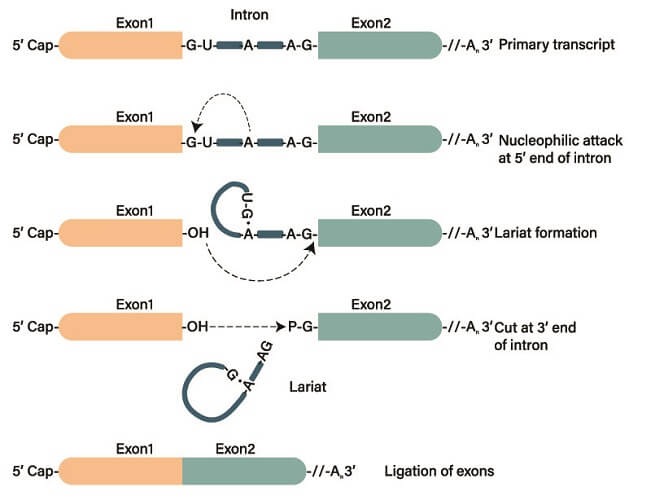
The next step in genetic medicine is precision medicine, where treatment and prevention of disease takes each person’s genes, environment, and lifestyle. This approach will take time but is certainly the future of medicine – the result of a groundbreaking theory from the mid-twentieth century still making waves in the next.

